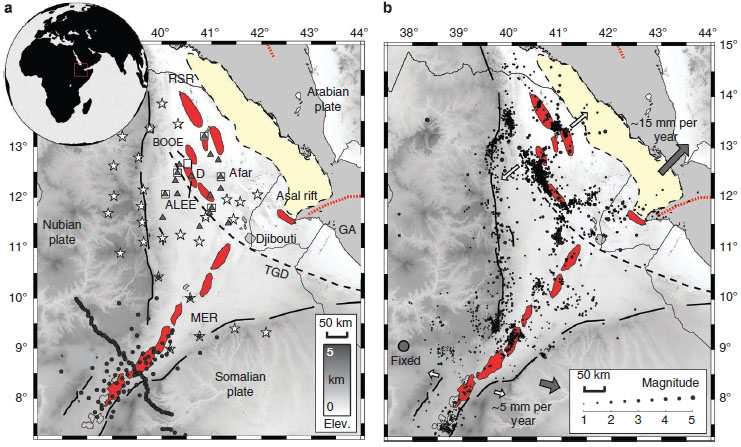Mapping the evolving strain field during continental breakup from crustal anisotropy in the Afar Depression by Keir et al, 2011
Non-technical summary
Rifting of the continents leading to formation of new oceans occurs by a combination of brittle faulting of the crust and magma intrusion into the crust, yet where each of these rifting mechanisms occurs and over what time scale remains controversial. This paper uses seismic data (energy waves released by earthquakes) to study the distribution and density of faults and dykes in the crust.
The seismic data show rifting currently occurs by intrusion of dykes (vertical sheets of magma), and small faults caused by magma fracturing brittle rock, that is focused into a narrow swath through the centre of the rift zone. This suggests that whilst continental rift zones begin as broad zones of extension where faulting and stretching of the Earth's crust occur, as the rift evolves the extension becomes focused along narrow zones and it is the intrusion of magma that accounts for most of the rift opening.

Figure 1: a) Distribution of seismic stations in Ethiopia 2001-2009. b) Distribution of earthquakes in Ethiopia 2001-2009.
Full paper (PDF file)
